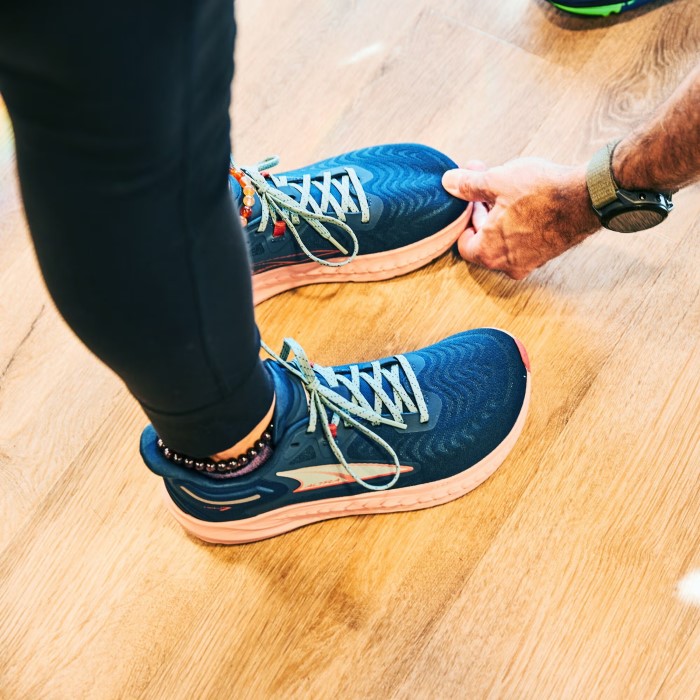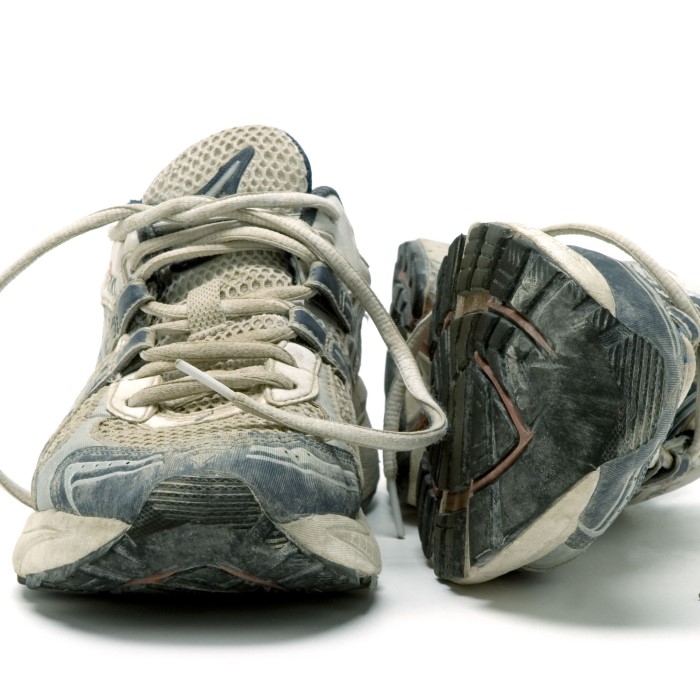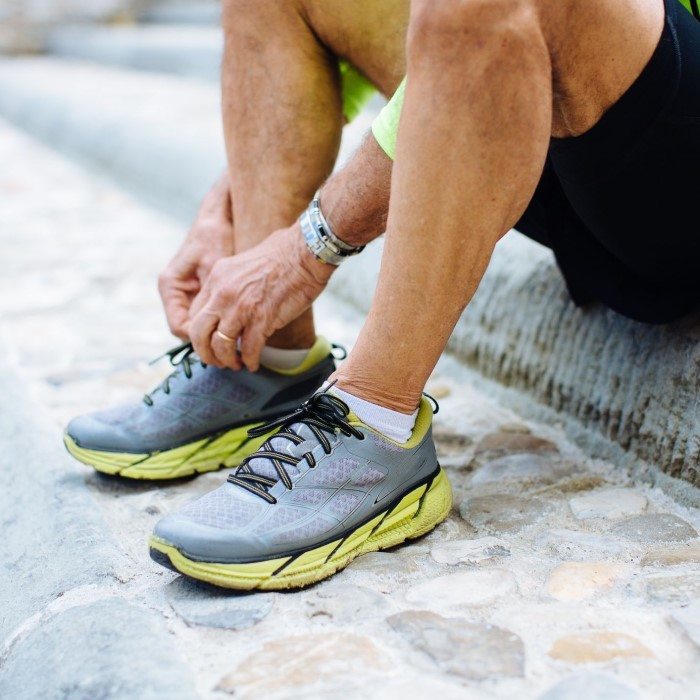Importance of Proper Fit for Runners
Finding the perfect running shoe isn’t just about style; it’s paramount for comfort and performance. A proper fit reduces injury risk, enhances comfort, and improves running efficiency. Here’s why fit matters:
- Injury Prevention: Shoes that fit well help prevent blisters, calluses, and more severe issues like plantar fasciitis.
- Comfort: Running is more enjoyable when your shoes fit comfortably. Shoes that are too tight can lead to pain, while shoes that are too loose can cause chafing.
- Performance: A well-fitted shoe provides the right balance of support and flexibility, aiding in better running form and efficiency.
Assessing how tight should running shoes be is crucial for runners. The foot expands and contracts with each step, so a shoe that is snug without being constrictive is ideal. Aim for a thumb’s width of space between the longest toe and the shoe front, ensuring toes have room to move.
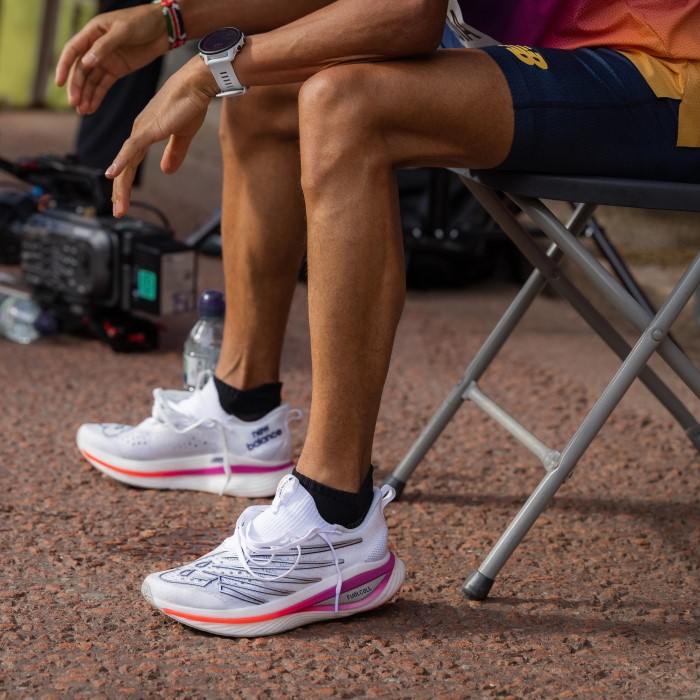
Properly fitted running shoes should secure the heel. Heels must not slip as you run. The midfoot area should feel comfortably hugged by the shoe, offering support while allowing natural foot movement. Lastly, pay attention to the width – your feet should not feel squeezed on the sides.
Since fit can impact a runner’s experience significantly, investing time in finding the right shoes is worthwhile. Always try running shoes on in the late afternoon when feet are likely at their largest. Keep in mind that how tight running shoes should be varies from person to person, so personalize the fit to your comfort and needs.
Key Factors for Running Shoe Fit
When chasing the perfect running shoe fit, consider these key factors:
Shape of the Shoe:
It is essential for the shoe to align with the natural contour of your foot.
Consider the structure of your foot, including the forefoot, midfoot, and heel, to ensure that the shoe’s design accommodates these areas comfortably.
A shoe that mirrors the shape of your foot reduces the risk of blisters and discomfort during wear.
Size and Length:
When trying on shoes, ensure that there is approximately a thumb’s width (about half an inch) of space between your longest toe and the end of the shoe.
This extra length allows for proper foot movement and prevents your toes from hitting the front of the shoe, which can lead to pain and injury.
Remember that foot size can change throughout the day, so it’s best to try on shoes in the afternoon when your feet are slightly swollen.
Width:
The width of the shoe should provide a snug fit without pinching or feeling overly loose at the sides.
Shoes that are too narrow can cause discomfort and lead to various foot problems, such as bunions or blisters, while shoes that are too wide may not provide enough support.
Different brands and styles may offer various width options, so it’s important to find a shoe that fits your foot shape properly.
Arch Support:
The level of arch support needed varies among individuals depending on whether you have flat, normal, or high arches.
Proper arch support helps to distribute body weight evenly across your feet and can alleviate pressure on certain areas, reducing fatigue during prolonged wear.
Consider shoes with built-in arch support or those that allow for custom orthotics if necessary.
Heel Counter:
A firm and secure heel counter is crucial for preventing the heel from slipping out of the shoe during movement.
This feature enhances stability and provides additional support, which is particularly important for activities that involve lateral movements, such as running or playing sports.
Insufficient heel counter support can lead to blisters and instability while walking or exercising.
Flexibility:
Shoes should exhibit flexibility in specific areas that correspond with the natural flexing points of your foot, particularly the forefoot.
A shoe that bends easily at these points allows for a more natural range of motion, making activities like walking, running or jumping more comfortable.
Stiff shoes can restrict movement and lead to discomfort and fatigue.
Breathability:
A good pair of shoes should feature materials that provide adequate ventilation to keep your feet dry and comfortable throughout the day.
Breathable shoes help to reduce moisture buildup, which can prevent odor and mold as well as lower the risk of skin irritations.
Look for shoes made from mesh or other lightweight materials that promote airflow.
Cushioning:
The right level of cushioning in a shoe is essential for absorbing impact while maintaining performance.
Shoes should provide enough cushioning to protect against shocks, especially during high-impact activities, without feeling overly soft and compromising stability or responsiveness.
Different activities may require varying levels of cushioning, so consider what best suits your specific needs, whether it’s running, hiking, or casual wear.
Remember, the goal is not just to find how tight running shoes should be but to ensure every aspect accommodates your foot’s unique contour and movement.
How to Measure Your Foot for Running Shoes
Measuring your foot correctly ensures that you find running shoes that fit well. Follow these simple steps:
- Gather Materials: You will need a piece of paper, a pen, and a ruler or measuring tape.
- Trace Your Foot: Place the paper on a flat surface. Step on it with a bare foot and trace around it. Make sure to hold the pen straight and not at an angle.
- Measure Length: Use the ruler to measure from the bottom of the heel to the top of the longest toe. Record this number as the foot length.
- Measure Width: To find the width, measure between the widest points of your traced foot. Note this measurement as well.
- Check Arch Length: Sometimes, the arch length indicates a better fit than the foot length. Measure from your heel to the ball of your foot, where the big toe bends.
- Repeat for the Other Foot: Since feet can vary in size, measure both feet and use the larger set of measurements.
- Refer to Size Guides: With these measurements, compare to sizing charts provided by running shoe brands. This will tell you how tight running shoes should be for your size.
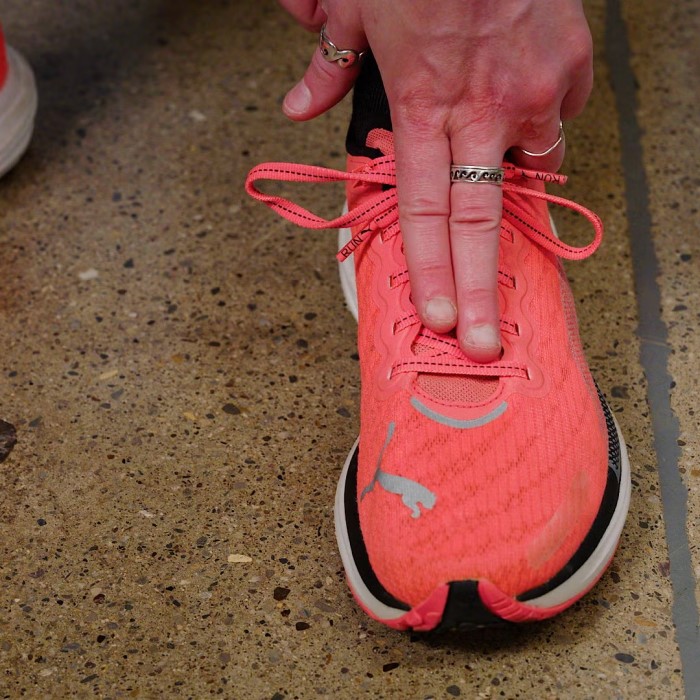
When measuring, remember that feet may swell during the day, so measure in the afternoon for best results. Also take into account if you wear orthotics or thicker socks when running. To avoid a fit that’s too tight, ensure there’s about a thumb’s width of space beyond your longest toe in the shoe size you choose. It’s important to tailor these steps to what feels right for you, keeping in mind your usual running conditions.
Signs of Poorly Fitted Running Shoes
It’s crucial to recognize when running shoes are not fitting right. Poor fit can lead to discomfort and injury. Here are some signs that indicate your running shoes might not be the ideal fit:
- Heel Slippage: Your heels should not move much. If they slip, the fit is too loose.
- Blisters or Calluses: These often show up when shoes rub your feet the wrong way.
- Toes Cramped or Bunched: If your toes lack room and feel cramped, your shoes are too tight.
- Persistent Pain: Pain in your feet, ankles, or shins may be due to poor fitting shoes.
- Wrinkles in the Upper: Wrinkles can mean the shoes are too wide for your feet.
A well-fitted running shoe is supposed to secure your feet without causing pain or restricting movement. If you notice any of these signs, consider getting a better-fitting pair. Ensure that the length, width, and overall shape match your foot’s dimensions. Remember how tight running shoes should be for safety and comfort. This may mean trying on different brands or styles to find the perfect match for your feet. Taking the time to find a good fit can greatly enhance your running experience.
Adjusting Lacing Techniques for Better Fit
Improving the fit of your running shoes can often be as simple as changing your lacing techniques.
Different lacing methods can address various fit issues:
- Standard Lacing: This technique works for most runners and ensures even pressure across the foot.
- Loop Lacing Lock: Ideal for preventing heel slippage. Create a loop with the last two eyelets and thread the laces through them.
- Window Lacing: Relieves pressure points on the top of the foot by skipping over eyelets.
- Diagonal Lacing: Good for wide feet. Lace diagonally instead of straight across to create more space.
When adjusting laces, make sure you start from the bottom and work your way up, ensuring the shoe is snug but not too tight. Keep laces flat, not twisted, for comfort. Focus on areas where you feel pressure or slippage. For example, tighten towards the ankle if there’s heel movement or loosen near the toes if they feel cramped.
Remember to reassess how tight your running shoes should be after adjusting laces. Your feet should feel secure without any discomfort. Pay attention to how your shoes feel during a run, and tweak the lacing as needed. With time, you’ll find the lacing technique that best suits your feet’s needs.
Balancing Shoe Tightness and Comfort
Finding the balance between how tight your running shoes should be and overall comfort is key. Here’s how to strike that perfect balance:
- Understand Your Foot’s Cycle: As you run, your feet swell and contract. Shoe tightness should accommodate this without restricting circulation.
- Room for Movement: Ensure there’s enough space for toes to wiggle, which means about a thumb’s width from the longest toe to the front of the shoe.
- Snug but Not Suffocating: The fit should be snug around the midfoot and heel, but not so tight that it feels suffocating or leaves marks on your skin.
- Consider the Socks: The thickness of your socks can affect the fit. Try on shoes with the socks you’ll run in to get the true feel for tightness.
- Give Them a Test Run: Walk or run a bit in the store, if possible. The right tightness shouldn’t cause discomfort or change your stride.
Properly balancing shoe tightness with comfort can prevent injuries and enhance your running performance. Take the time to find this balance for a better running experience.
Tips for Trying on Running Shoes
When searching for that perfect pair, trying on running shoes is a step you cannot skip. Here’s how to do it right:
- Visit Later in the Day: Since feet swell over the day, shop later for a true fit.
- Bring Your Socks: Always wear the socks you’ll run in to ensure the right tightness.
- Take Your Time: Never rush. Walk and jog in the store to gauge comfort and tightness.
- Check for Space: You should fit a thumb’s width between the toe and shoe front.
- Feel the Width: Make sure the shoes are not too tight or loose on the sides.
- Ensure Heel Security: Your heel must not slip. Proper tightness prevents unnecessary movement.
- Align with Arch Type: Shoes should support your arch type without feeling too tight.
- Consider Orthotics: If you use them, bring along and try them on with your shoes.
By following these tips, you’ll better understand how tight should running shoes be for your feet. The right fit supports your runs and helps sidestep discomfort and injury.
When to Replace Your Running Shoes
Knowing when to replace your running shoes is just as important as getting the right fit. Shoes that have outlived their lifespan can cause discomfort and increase injury risk due to compromised support and cushioning. Here are signs that indicate it’s time to shop for a new pair:
- Mileage Tracker: Most running shoes are good for about 300 to 500 miles. Keep track of your mileage to know when they’re due for replacement.
- Worn Out Sole: Check the outsole tread. If it shows significant wear, especially in the heel or forefoot, it’s time for new shoes.
- Midsole Breakdown: When the cushioning loses its bounce and feels too compressed, the midsole may be worn down. This means less shock absorbance during runs.
- Uneven Wear Patterns: Uneven wear can lead to alignment issues or injuries. If you notice uneven wear on the soles, get a new pair.
- Comfort Loss: Pay attention to comfort. Are your shoes not as comfortable as they were when new? If so, consider replacing them.
- Persistent Aches: Experiencing aches and pains may be a sign that your shoes are no longer providing the necessary support. Listen to your body.
Regularly assess how tight your running shoes should be and the condition of your shoes. Replace them as needed to ensure your feet stay happy and healthy. Keep these tips in mind to maintain peak performance and comfort in your running journey.
Conclusion: Perfecting Your Fit
Understanding how tight should running shoes be is essential for all runners — whether you’re training for a marathon or simply jogging for fitness. It impacts not only comfort but also performance and injury prevention. By measuring your feet, experimenting with different fits, and understanding your specific running style, you can find the perfect pair of running shoes tailored to your needs. Remember, a well-fitted shoe will not only enhance your running experience but will also support your journey towards achieving your running goals.
Always prioritize comfort and fit, ensuring that your running shoes provide you with the best possible experience on your runs. Happy running!
